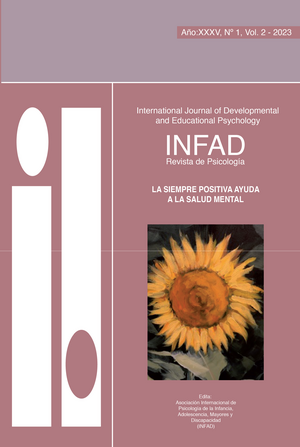Corpo e historicidade: um percurso do corpo físico ao corpo inconsciente na toria de Andre Lapierre
Contenido principal del artículo
Resumen
A história do corpo não foi bem delineada ao longo do tempo. Se utilizada como referência cronológica a Idade Média, percebe-se uma atmosfera de interdições e proibições, associando o corpo ao preconceito sobre a sexualidade e as sensações que contrapunham o pensamento religioso da época, base de um pensamento ocidental, o qual se conserva, em parte, atualmente. No entanto, o século XX traz consigo o advento de estudos científicos nas áreas médica e psicológica, provocando mudanças nessa perspectiva. O termo psicomotricidade, por exemplo, surgiu nas pesquisas da neurologia no ano de 1900 em contraposição ao pensamento cartesiano, introduzindo a ideia coerente de que corpo e mente são elementos unificados e a integração saudável deles é formadora da identidade equilibrada do sujeito. No percurso do referido século, autores como Andre Lapierre apresentam resultados dos seus estudos sobre o corpo, mostrando a exatidão, o rigor e, simultaneamente, a ousadia e a contestação, queconduzem a algumas constatações a respeito do corpo e detudo o que se encontra no seu entorno de forma consciente e inconsciente. Um dos grandes legados do século XX está na condição do corpo afetivo/inconsciente a partir dos trabalhos do mundo pós-guerra, em uma análise do corpo na totalidade, como morada dos sentimentos e das experiências fundamentais para a constituição do ser. Por meio de uma pesquisa de análise bibliográfica, esta comunicação tem, portanto, o objetivo de debater o percurso acerca do corpo e as evoluções dos pensamentos que levaram a novas teorias e abordagens do desenvolvimento humano, em especial, a prática da Psicomotricidade Relacional à luz da experiência do francês Andre Lapierre, que apresenta uma visão inovadora e restauradora das emoções a partir do movimento corporal espontâneo e simbólico.
Detalles del artículo
Sección

Esta obra está bajo una licencia internacional Creative Commons Atribución-NoComercial-SinDerivadas 4.0.
Aquellos autores/as que tengan publicaciones con esta revista, aceptan los términos siguientes:
- Los autores/as conservarán sus derechos de autor y garantizarán a la revista el derecho de primera publicación de su obra, el cuál estará simultáneamente sujeto a la Licencia de reconocimiento de Creative Commons que permite a terceros copiar y redistribuir el material en cualquier medio o formato bajo los siguientes términos: —se debe dar crédito de manera adecuada, brindar un enlace a la licencia, e indicar si se han realizado cambios. Puede hacerlo en cualquier forma razonable, pero no de forma tal que sugiera que usted o su uso tienen el apoyo de la licenciante (Atribución); — no se puede hacer uso del material con propósitos comerciales (No Comercial); — si se remezcla, transforma o crea a partir del material, no podrá distribuirse el material modificado (Sin Derivadas).
- Los autores/as podrán adoptar otros acuerdos de licencia no exclusiva de distribución de la versión de la obra publicada (p. ej.: depositarla en un archivo telemático institucional o publicarla en un volumen monográfico) siempre que se indique la publicación inicial en esta revista.
- Se permite y recomienda a los autores/as difundir su obra a través de Internet (p. ej.: en archivos telemáticos institucionales o en su página web) antes y durante el proceso de envío, lo cual puede producir intercambios interesantes y aumentar las citas de la obra publicada. (Véase El efecto del acceso abierto).

Este obra está bajo una licencia de Creative Commons Reconocimiento-NoComercial-SinObraDerivada 4.0 Internacional.
Cómo citar
Referencias
Ajuriaguerra J. Manual de Psiquiatria Infantil. Rio de Janeiro: Masson do Brasil, 1983.
Almeira, F.Q. Conexões, Campinas: SP, v. 19, e0210019. ISSN: 1983-9030.2020.
Bracht, V.; Almeida, F.Q. Pedagogia crítica da educação física: dilemas e desafios
Binger, H. Liber vite meritorum. Editado por Angela Carlevaris. Corpus Christianorum: Continuatio Mediaevalis, v. 90. Turnhout: Brepols. 1995.
Bracht, V.; Almeida, F.Q. Pedagogia crítica da educação física: dilemas e desafios na atualidade. Movimento, v. 25, e25001, p. 1-15, 2019.
Cabral, Suzana Veloso. Psicomotricidade Relacional: Prática Clínica e Escolar. Rio de Janeiro: Revinter, 2001
Dolto, F. (1999). Tudo é linguagem. São Paulo: Martins Fontes.
Duby, G. A Idade Média, Idade dos Homens: do amor e outros ensaios. São Paulo: Companhia das Letras, 1989.
Figueiredo, A. C. Vastas confusões e atendimentos imperfeitos. Rio de Janeiro: Relume Dumará. 1996.
Fonseca, Vítor. Psicomotricidade. São Paulo: Martins Fontes, 1993.
Lapierre, A. (2010). Da psicomotricidade relacional à análise corporal da relação. Curitiba: Editora da UFPR.
Lapierre, A.; Aucouturier, B. A simbologia do movimento. Psicomotricidade e educação. 3. ed. Curitiba: Filosofart/ CIAR. 2004.
Lapierre, A.; Lapierre, A. O adulto diante da criança de 0 a 3 anos: psicomotricidade relacional e formação de personalidade. 2 ed. Curitiba: UFPR / CIAR. 2002.
Le Goff, J.; Truong, N. Uma história do corpo na Idade Média. Tradução: Marcos Flamínio Pires. Revisão técnica: Marcos de Castro. Rio de Janeiro: Civilização Brasileira, 2006.
Nóbrega, Terezinha Petrúcia. Uma fenomenologia do corpo. São Paulo: Livraria Editora da Física, 2010.
Ortega, F. O corpo incerto: corporeidade, tecnologias médicas e cultura contemporânea. Rio de Janeiro: Garamond, 2008.
Pich, S.; Ghidetti, F.F.; Bassani, J.J. As derivas do corpo e sua educação: dos seus saberes e das suas artes. In: Galak, Eduardo; Athayde, Pedro; Lara, Larissa. Por uma epistemologia da educação dos corpos e da Educação Física. Natal: EDUFRN, 2020. p. 49-61.
Piaget, Jean; Barbel, Inhelde. A Psicologia da Criança 15º edição. Rio de Janeiro: Bertrand Brasil, 1998.
Rother, E. T. (2007). Revisão sistemática X revisão narrativa. Editorial, Acta paul. enferm. 20 (2), Jun 2007. https://doi.org/10.1590/S0103-21002007000200001
Viana, M. (2012). Vivências e concepções de vida de jovens vítimas de abuso sexual. Tese de Mestrado. Universidade de Évora, Portugal, 2012. http://dspace.uevora.pt/rdpc/handle/10174/14055
Viana, M.; Braide, A.S.G.; Anastácio, Z.C. Motricidade corporal como meio de ressignificação da sexualidade do adolescente institucionalizado. Revista Internacional de Psicologia do Desenvolvimento e da Educação. Revista INFAD de psicologia 2(2):203-216. DOI: 10.17060/ijodaep.2021.n2.v2.2226. Dez.2021.
Vieira, L.; Batista, M.I.B.; Lapierre, A. Psicomotricidade Relacional: a teoria de uma prática. Curitiba: Filosofart/Ciar. 2005.
Winnicot, Donald Woods. O Ambiente e os Processos de Maturação. Porto Alegre: Artes Médica, 1990.

